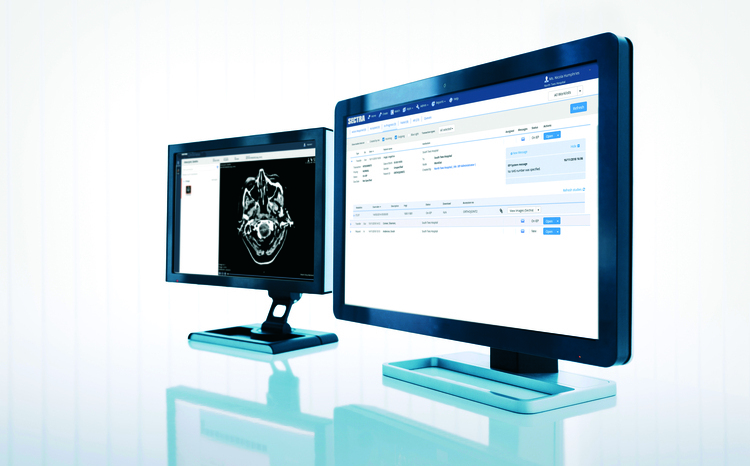Wirral’s gateway to care
- 4 August 2005

For the past 15 years Wirral Hospitals NHS Trust has been at the vanguard of harnessing clinical IT to benefit patient care, through successive initiatives focused on the electronic patient record, hospital information system and resource management.
Drawing on the practical lessons of real world issues and implementation, these are some lessons we’ve learned to date and some of the things we looked for when we procured our new integrated clinical system.
Although some of the issues set out have been superseded by newer applications, some are not seen in many or any vendor offerings.
Order communications
One of the key points to stress is that if and when order entry and results reporting is rolled out in your organisation, it brings with it problems as well as the many published obvious benefits. One immediate problem is that easy-to-use order communications, both stand alone and as part of an integrated care plan, can greatly increase work load in service departments such as pathology and radiology.
If you take lessons from history, the move from handwritten general request forms to ‘tick box’-specific forms produced a surge of global tick boxing for defensive medicine purposes. Similarly, when you make order communications easy, and even automate it, then workload figures can suddenly soar.
Decision support
Decision support is needed not just for correct order, but also to inform on current work and recent work in the area of the request being made. In busy complex hospitals with rapid transfers of patients and on call cover, many order requests remain unseen by different clinical teams and extensive duplication can occur.
A pragmatic approach is to force a review in the order pathway process of current activity in this area, such as the last seven days of work, work in progress and work planned. This can include banning use of automated schedules except in certain clearly defined situations.
A good example would be to strongly discourage doctors from ordering scripts such as repeating urea and electrolyte tests (U&Es) and full blood counts every day, except under very specific circumstances. Selective intelligent repeat schedules such as ordering an INR (International normalised ratio) every day at 16:00, whilst a patient is still on a relevant anticoagulant, are good uses of automated scheduling or discrete integrated care pathways and help promote patient safety and service quality.
Alert fatigue
Alert fatigue can occur if an electronic prescribing system is firing off too many automatic bells, alerts and prompts at a busy clinician. To overcome these potential pitfalls hospitals should carefully analyse the main risk areas in prescribing, and identify a ‘Top 10’ of issues to work on and fix.
The approach that must be aimed for is to get the right product, route, dose and schedule first time, rather than providing a clinician with alerts of problems after the script has been generated – this can be thought of as ‘intuitive electronic prescribing’. This technique saves time and is educational for the less experienced user, and anecdotal evidence in Wirral suggests the junior doctors are receptive to this approach.
Less traditional order scripting is often focused on known problem areas and can turn around the existing process. So instead of ordering a particular drug or product, a question may instead be asked about what is wrong with the patient, then leading to a product choice along with route, dose and schedule. Flexible alerting linked to patient demographics, location and experience and skill set of the clinician are also useful approaches to overcome alert fatigue.
Apply ‘directed’ prescribing with care
Evidence from Wirral suggests that secondary care clinicians only use – and therefore ‘know’ in detail – a relatively small range of formulary items within their speciality or sub-speciality. This means that ‘directed’ prescribing in the clinician’s domain may well have ready-to-use best practice scripts, allowing the full bells and whistles alerts to be saved for when the clinician strays into products and items they seldom use or have little experience of.
Sensible rounding of drug calculations should be achieved with measurements that can be achieved in the administration process. This rounding algorithm needs to flex by drug type, and often level of dose.
Intelligent scheduling and routing
Intelligent scheduling and routing are essential. In Wirral the priority of ‘routine’ is never used, instead almost everything is ‘urgent’ or ‘ASAP’. Analysis of some of the ordering patterns in urology and radiology showed a good performance when specific date targets are used in the order script. Order sentences in the outpatient setting can be complex, such as "I will see you when the results are available", or perform this test two weeks before your next appointment (when patient has yet to make the next appointment).
Shared care processes between primary and secondary care also need careful consideration to avoid duplication, so the left-hand in primary care not knowing what right-hand in secondary care is doing – known locally as L&R problems. Also to be avoided is the sin of omission as a result L&R processing errors i.e. "I thought the ‘other’ clinician was taking care of the order, process, script or result…"
The patient often assumes that the NHS is ‘joined up’ and a single information source, so clear instructions to patients – and clinicians – are required. Good examples are ante-natal shared care plan. A comprehensive 40 week plan and order set are created at booking in as a roadmap for the pregnant woman and her carer, with all necessary documentation to facilitate order communications in either primary or secondary care, and ensure L&R problems are avoided.
Clear business rules
Business rules are needed about who should be electronically copied in shared care areas such as diabetes, thyroid registers, lithium therapy etc and should reflect good practice in this area.
Smart routing can significantly reduce turn around and waiting times. For example, routing and scheduling by clinical comment, together with overriding order priority, brought 14 week waits for outpatient barium enema procedures down to within the two week standard laid down for suspected cancer cases. Few suppliers, however, currently have this facility.
Building in branching logic
In addition, by checking clinical indication alternatives more appropriate investigations can be suggested. Steps such as incorporating guidelines from the Royal College of Radiologists can make a significant difference.
For example, the ordering of barium swallows when a gastric ulcer is suspected can suggest endoscopy instead thus covering the possibility of a cancer diagnosis and the need for a biopsy. This is a “Y” branch, or type of pathway often referred to as branching logic that decision support systems must be able to accommodate.
Generally speaking, service routing should be done under the bonnet. A good rule is to never ask a question of the user if at all possible on service descriptions and availability. Wirral has 11 radiology locations with different opening times and available services. Presenting users with a list of 11 departments to choose from leads to badly managed workloads, routing by location, time of day, weekend, bank holiday, service required, acuity and so on should all happen automatically. Using other routes means something will inevitably go wrong.
Close the loop on information
Again because of co-morbidities, fast turn-arounds and complex problems in health, organisations can have L&R problems. Hospitals need to mitigate these risks by having secondary automatic referrals based on report logic, so referrals to cancer teams are sent if a patient presents with a cancer in an imaging report. This avoids the “loss” of the patient and starts the cancer investigation and treatment faster. Check results in outpatient settings are reviewed with “electronic in-trays” and avoid process failures in the hospital organisation.
Result reporting needs to be analysable. This means that the classic large chunks of free text, anatomic pathology and radiology need to be used to create a minimum data set and discrete data elements, such as size, staging, classification and so on to help with Calman data collection and analysis. HL7 v3 needs to consider this. DICOM has some standards based work in this area under the structured reporting headings. This approach needs to be extended.
In his next article, Pete Marsh will suggests ways of finding the right direction for electronic prescribing and drug administration.




